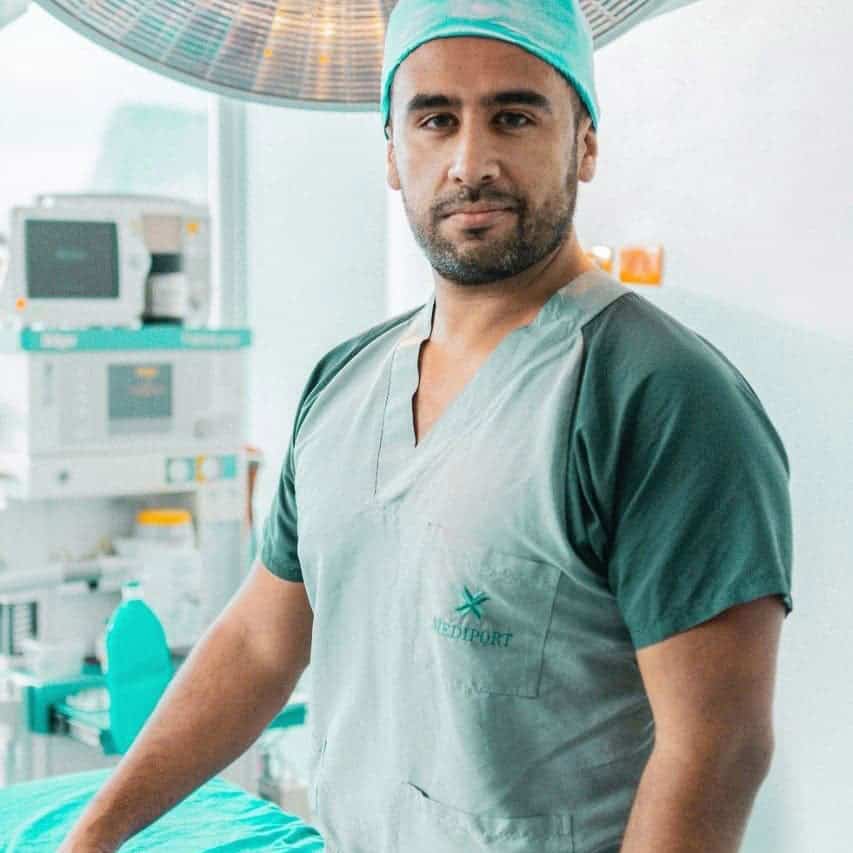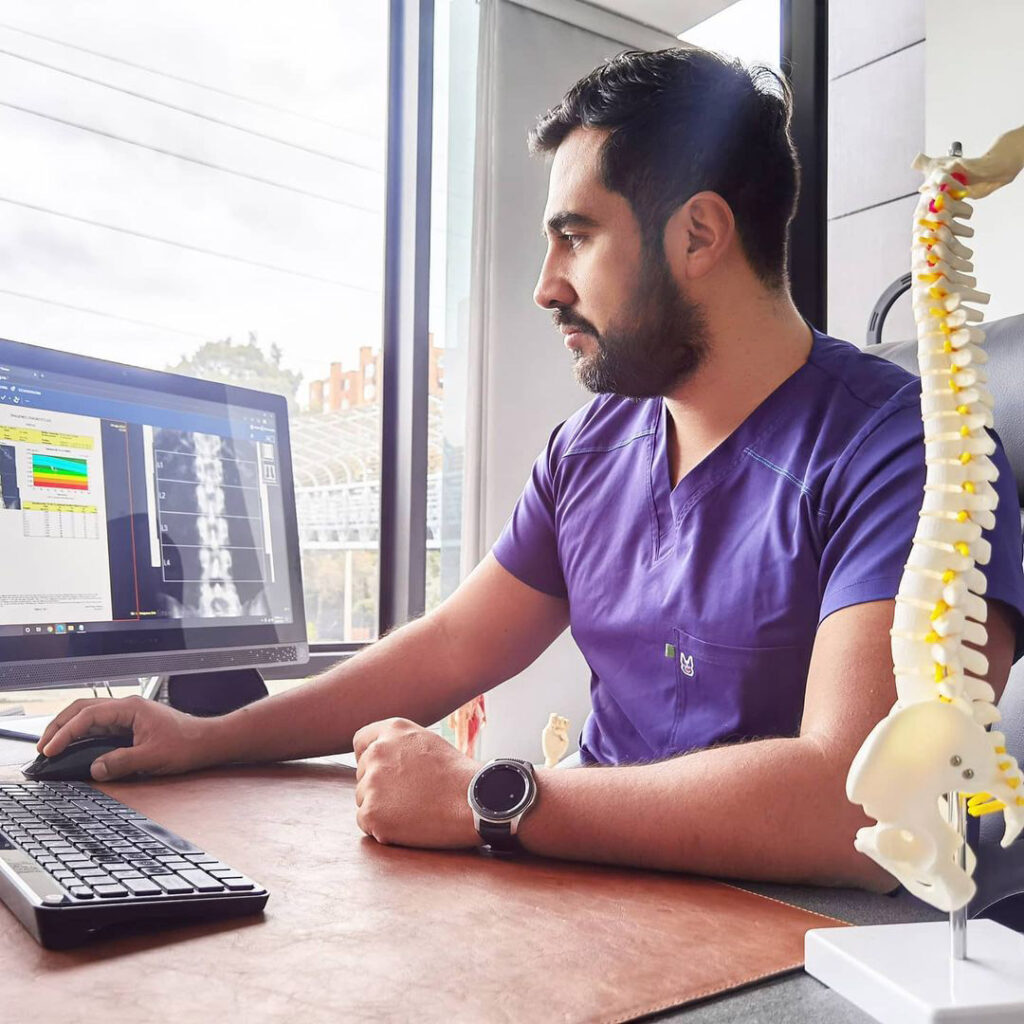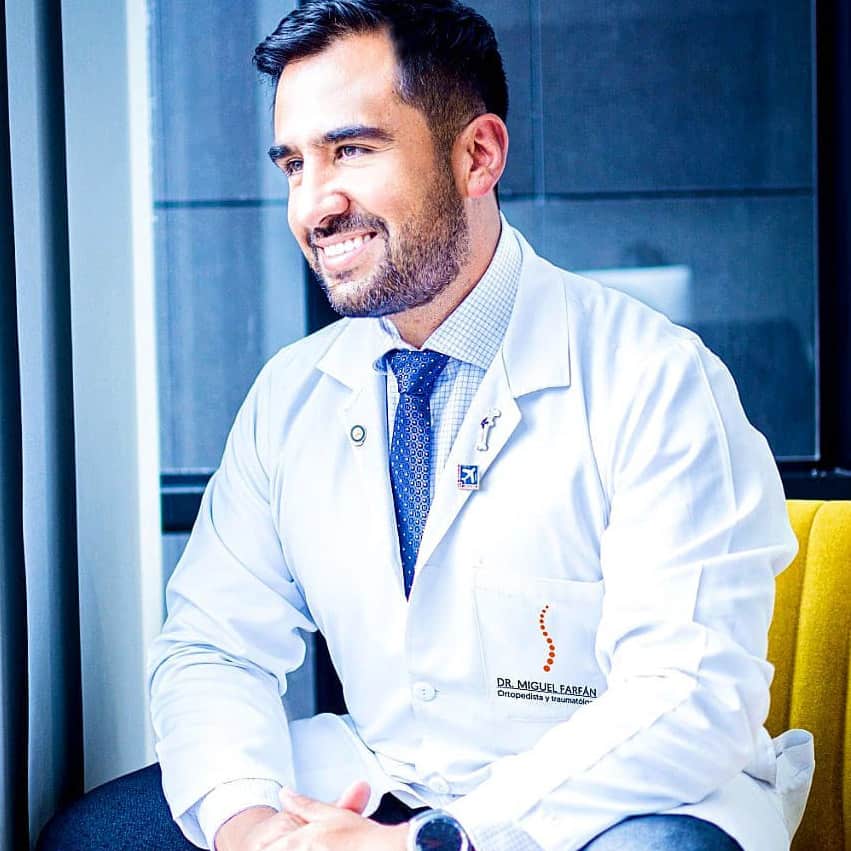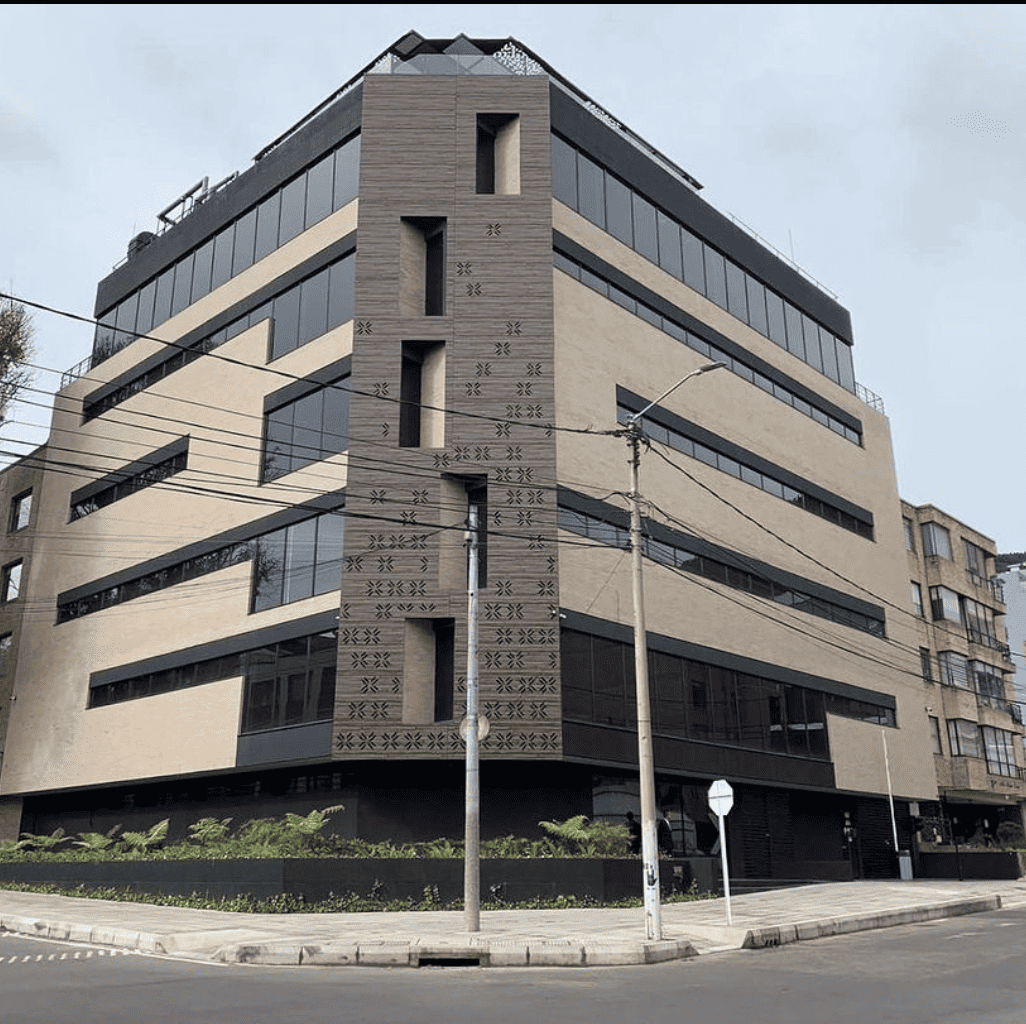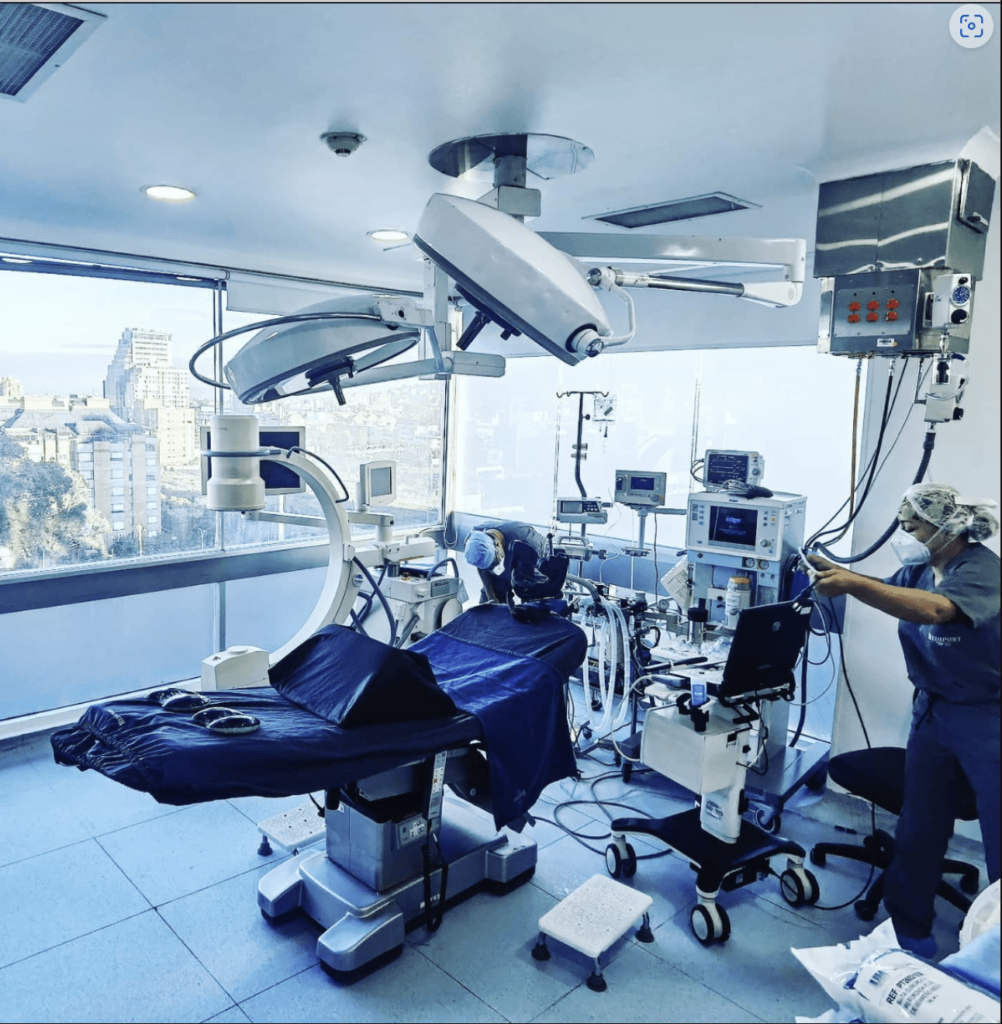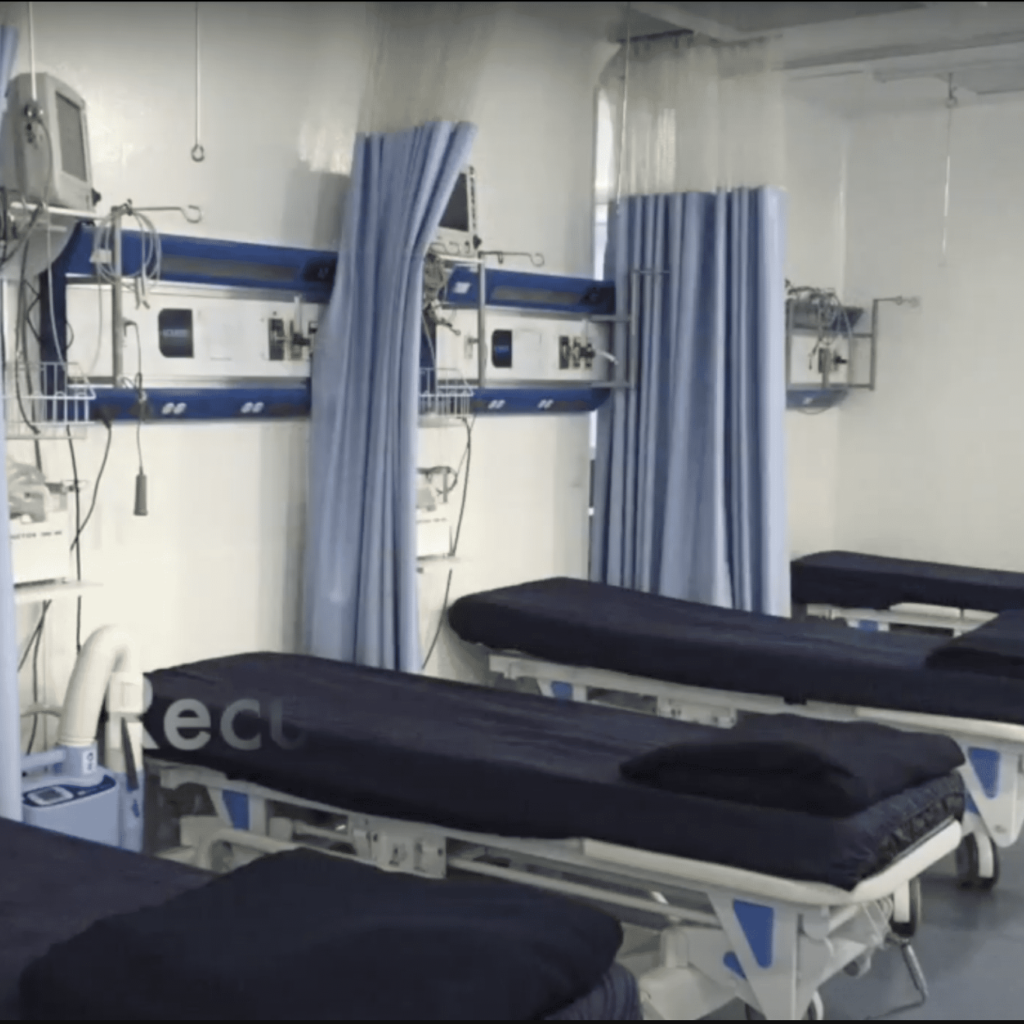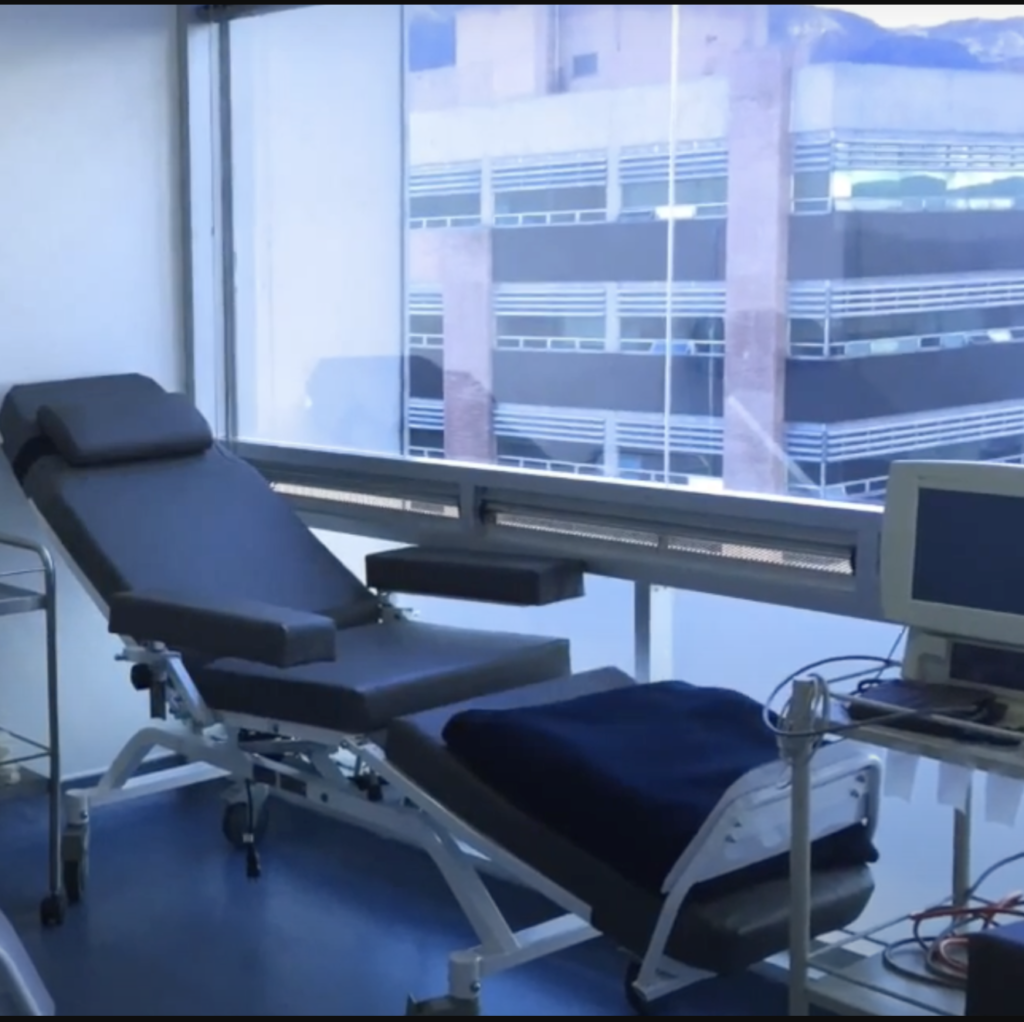
DR. FARFÁN SPINE SURGERY
ORTHOPEDIC SURGEON BOGOTÁ COLOMBIA
★★★★★ 5/5 Average rating on Google. More than 110 reviews on Google
CERVICAL SURGERY IN COLOMBIA
Cervical and herniated disc surgery.
Cost in private clinic Bogota Colombia

Cervical and herniated disc surgery. Price per person in private clinic Bogota-Colombia
DR. MIGUEL FARFÁN
Alta especialidad en cirugía de Columna U. Nacional Autónoma de México (en curso).
Ortopedista U. del Rosario Bogotá
Médico U. Nacional de Colombia
Miembro de:

★★★★★ 5/5 Calificación promedio en Google. Más de 5600 pacientes atendidos. Más de 110 opiniones en Google
Dr. Miguel Farfan is an Orthopedic Surgeon who graduated from the National University of Colombia and the University of Rosario with the Santa Fe Foundation of Bogota. He has a degree in spine surgery from the National Autonomous University of Mexico in Mexico City. He currently works as a specialist in spine surgery in Bogota and Mexico City.
The main pathologies treated by Dr. Farfan are degenerative disc disease, cervical and lumbar disc herniation, cervical stenosis, and vertebral fractures, among others.
SPINE SURGEON
DR. MIGUEL FARFÁN
Membership of:
Cervical Spine and Herniated Disc Surgery Price in a private clinic in Bogota-Colombia
Cervical spine surgery in a private clinic What does it consist of?
A cervical spine operation is a procedure in which the spine surgery specialist performs surgery to decompress and fix the cervical spine that presents some disease such as a narrow cervical canal or cervical disc herniation. The objective of the cervical spine operation via the anterior or posterior route is to decompress the neural elements of the cervical region, align and restore the normal structure of the spine, and relieve pain and discomfort in the hands and arms of the patient, the result of nerve compression. The cervical spine operation is also known as cervical arthrodesis, cervical decompression, or ACDF.
There are different types of techniques to perform a spine operation, however, the most common are:
1. Anterior cervical approach with discectomy and arthrodesis with cage or cage and plate (ACDF).
2. Anterior cervical approach with corpectomy and anterior fixation with cage or mesh and plate (ACDF).
3. Posterior cervical approach and decompression with or without fixation.
Each type of spine surgery procedure seeks to restore the function of the cervical spine by removing the herniation and eliminating the elements that cause pain and misalignment due to degenerative pathologies. The cervical spine operation is recommended in patients with neck pain accompanied by pain in the upper extremities, loss of strength in hands, clumsiness, or constant tingling, which has not improved with physical therapy, medications, anti-inflammatory or immunomodulators, after treatment for about three to six months.
In Bogota, Colombia, the price of a cervical spine operation may vary depending on the number of components required for each procedure and the surgical time and supplies.
The price of a cervical spine operation in a private clinic with the team of Dr. Miguel Farfan Orthopedist, on a private basis, can range from 10,000 to 15,000 US dollars depending on the number of levels and instruments required. Prices for cervical spine surgery can also vary if hospitalization is required for one or two days or if the patient requires home nursing, physical therapy, or several days of hospitalization. The price of the spine operation usually includes operating room fees, the necessary medications for the spine operation, the rental of special x-ray equipment used in operating rooms, the rental of a neurosurgical microscope for the performance of the operation, the hiring of the instrument maker and anesthesiologist, the medical fees of the orthopedic spine specialist and the postoperative overnight hospitalization. Additionally, if required, the spine operation price will include cervical inter-somatic boxes of PEEK or Titanium, titanium fixation screws, titanium meshes, titanium cage, and titanium rods, as the case may be.
Cervical spine surgery, how effective is it?
The effectiveness of cervical spine surgery is high as long as the patient has a proper diagnosis and has tried medical management with prudent physical therapy, weight loss, and analgesic and anti-inflammatory management. In other words, those patients who have not improved with non-surgical medical management benefit from surgery to relieve pain and improve hand function and physical activity. The decision to perform spine surgery on a patient should be agreed upon by the spine specialist, the patient, and the patient's family.
The surgical time for a cervical spine operation can range from 2 to 6 hours depending on the number of vertebral bodies or "levels" to be operated on and the approach chosen. The greater the number of levels required, the longer the surgical time.
When spine surgery is performed by qualified professionals trained with Fellowship or high specialty, the results are usually excellent and have shown greater patient satisfaction than maintaining medical management with medication and physical therapy for more than 3 months. Cervical spine surgery or cervical disc herniation should be performed when the patient presents alteration of hand functions, functional impairment, or persistent pain.
The effectiveness of spine surgery can be conditioned to many aspects, among them the patient's habits, the patient's weight, smoking, other wear and tear, or problems in other areas of the spine that continue to produce pain, lack of physical therapy, among others.
Smoking, being overweight, and a sedentary lifestyle are factors that harm the surgical outcome of patients.
After spine surgery, patients should maintain good lifestyle habits, weight control, spine stretching, and regular physical activity.
Cervical spinal column surgery or cervical disc herniation, care after surgery
After a cervical spine or cervical disc herniation surgery or operation, the patient will be in the recovery and hospitalization room normally for one day. During this period, the patient may feel tingling discomfort in the hands and neck, and difficulty swallowing, among others. It is advisable to walk after the first day of surgery in the recovery area.
During this observation period, the patient will resume the intake of liquids and food and postoperative pain will be managed with intravenous medications. Additionally, prophylactic antibiotic management will be administered to prevent postoperative infections.
For the first few days, you should be at home or in a hotel with relative rest and you should remain in the city of Bogota. You should take the medications and antibiotics prescribed by Dr. Farfán and follow the instructions. After some time (15 days) he should restart physical therapy and may return to simple activities that do not involve neck efforts.
As the postoperative days pass and your pain condition improves with physical therapy, you will be able to resume physical and work activities about six weeks postoperatively. The surgical stitches will be removed 15 days postoperatively.
Cervical spine surgery or cervical disc herniation, what is the procedure like?
International patients should arrive in the city of Bogota at least two days before the procedure to avoid secondary complications due to the altitude of the capital.
Subsequently, you will be evaluated by an anesthesia specialist in a pre-anesthetic assessment including blood labs, which must be approved.
You will arrive at the operating room with a family member two hours before the surgery with at least 8 hours of fasting. You should wear comfortable clothes and no valuables.
Once the patient is in the operating room, he/she will be anesthetized (general anesthesia) and positioned face up or face down on the surgical table (depending on the case). After that, Dr. Farfán and his team will proceed to clean the area to be operated (asepsis and antisepsis) and to position the X-ray equipment (C-arm) to locate the site of your cervical spine surgery or cervical disc herniation.
Once the specialist identifies the affected area, he will proceed to make the incision (according to the chosen technique) to reach the herniated disc or cervical stenosis and proceed to decompress the area through the use of a microscope.
At the end of the procedure, you will have a small covering dressing on the operated area and you will be transferred to the recovery area where you will be closely monitored.
Cervical spine or cervical hernia surgery, in which private clinic is it performed?
The cervical spine or cervical disc herniation surgeries with Dr. Miguel Farfan Orthopedist are performed in the city of Bogota in the VIP Clinic and the Mediport Ambulatory Surgery Center where quality standards for handling national and international patients are available.
Find a gallery of the facilities below:
In case you require more information about the cost of cervical spine surgery or cervical disc herniation in a private clinic with Dr. Farfan, do not hesitate to contact us at WhatsApp at +573123926825 or by clicking on the following button:




